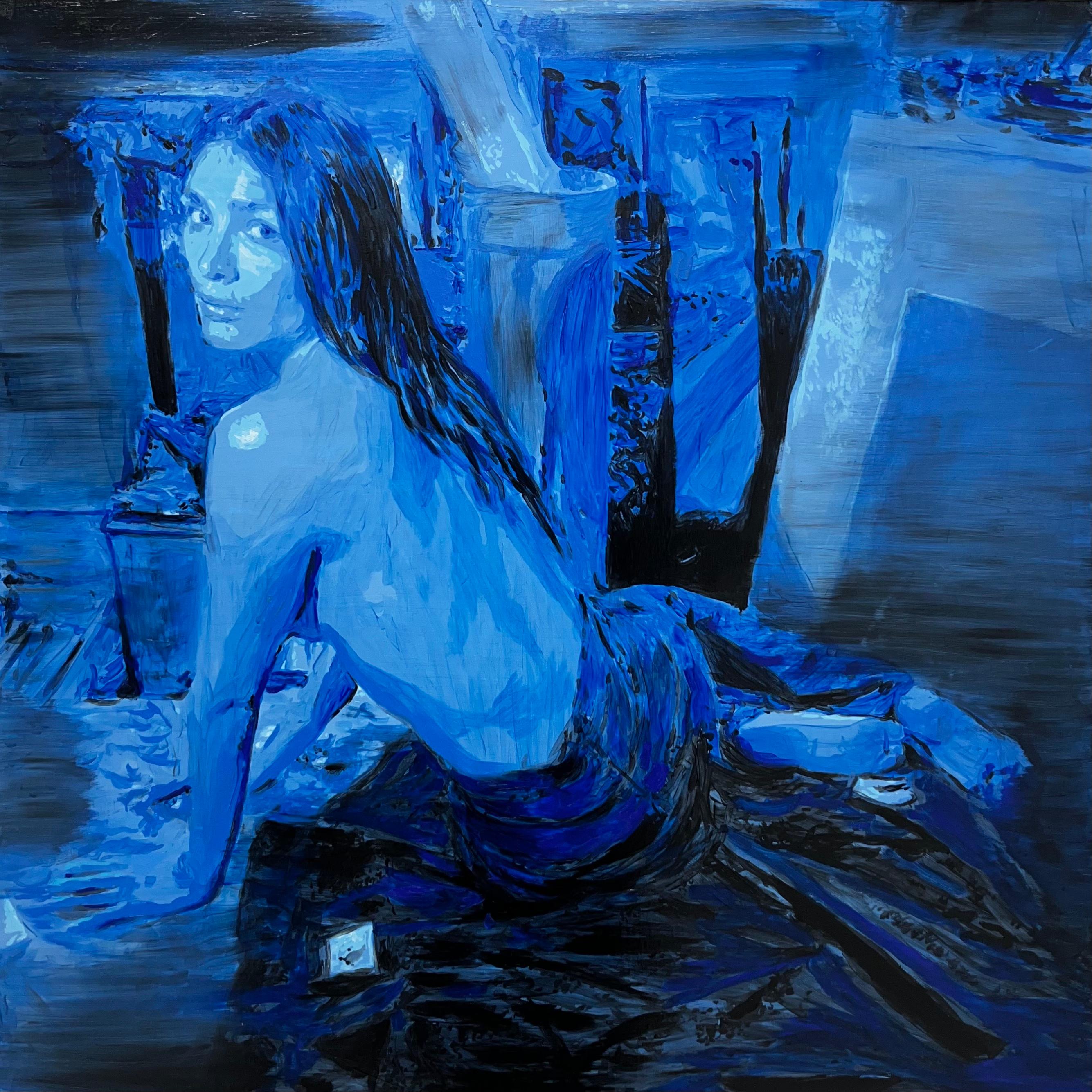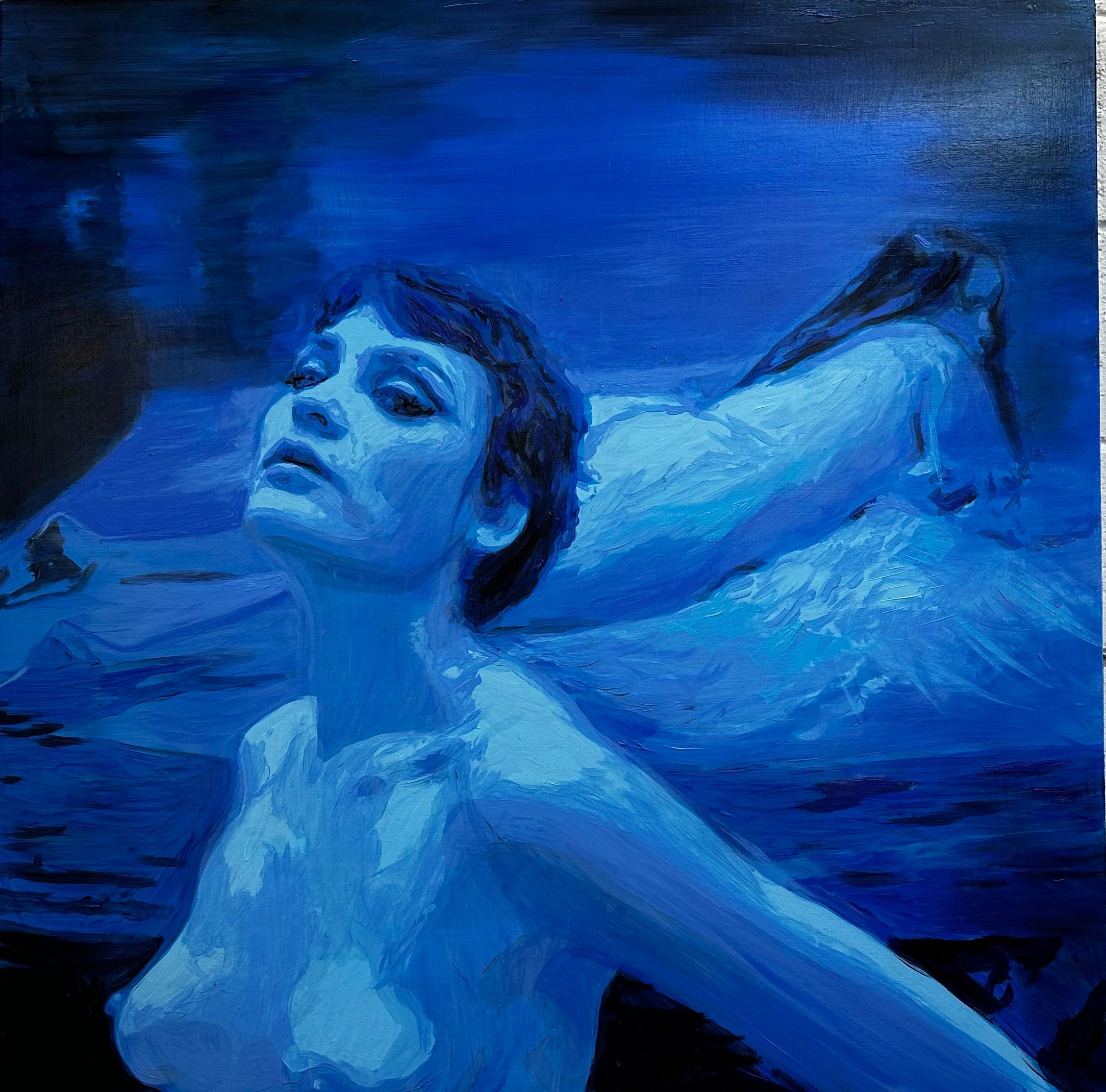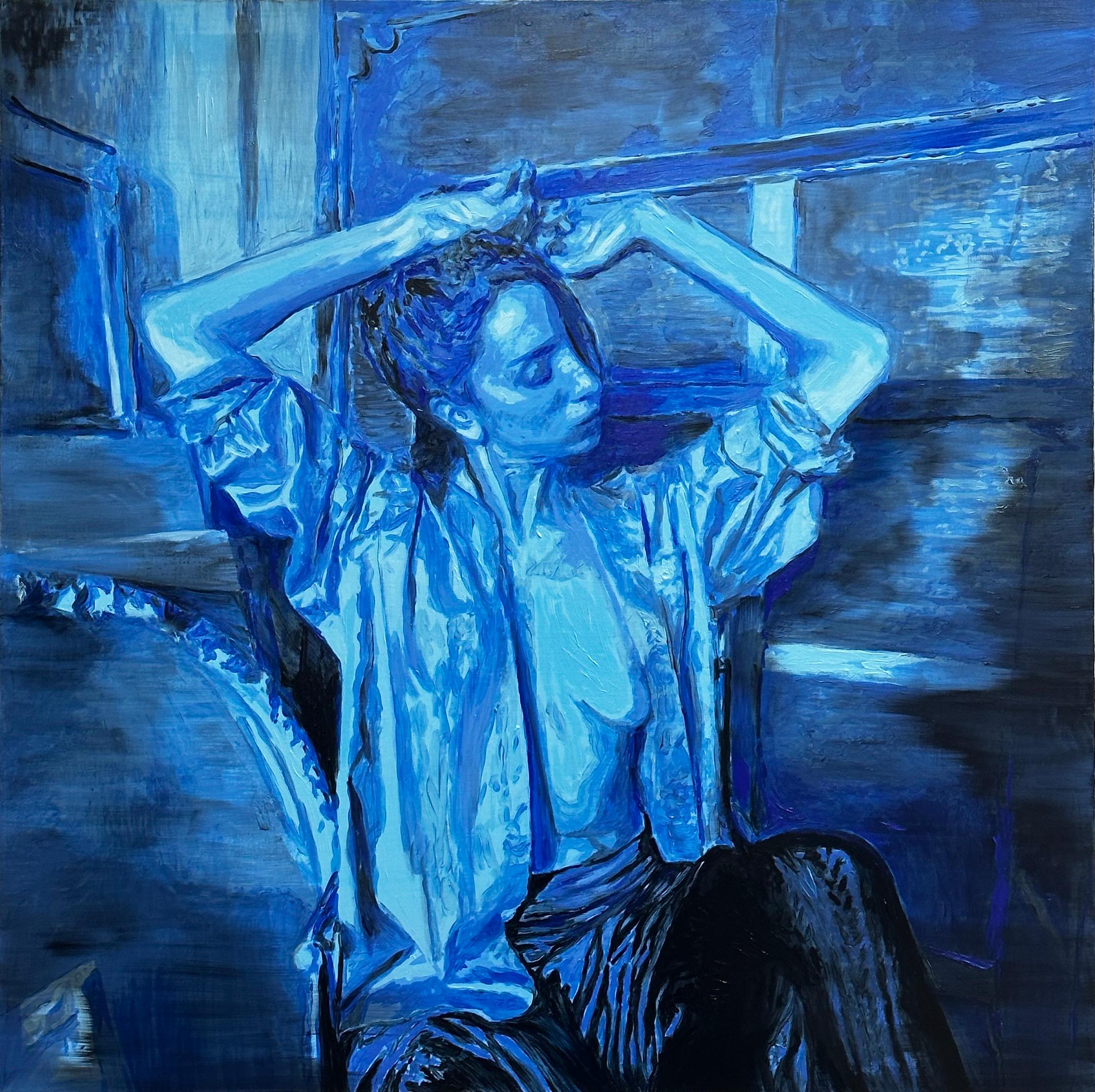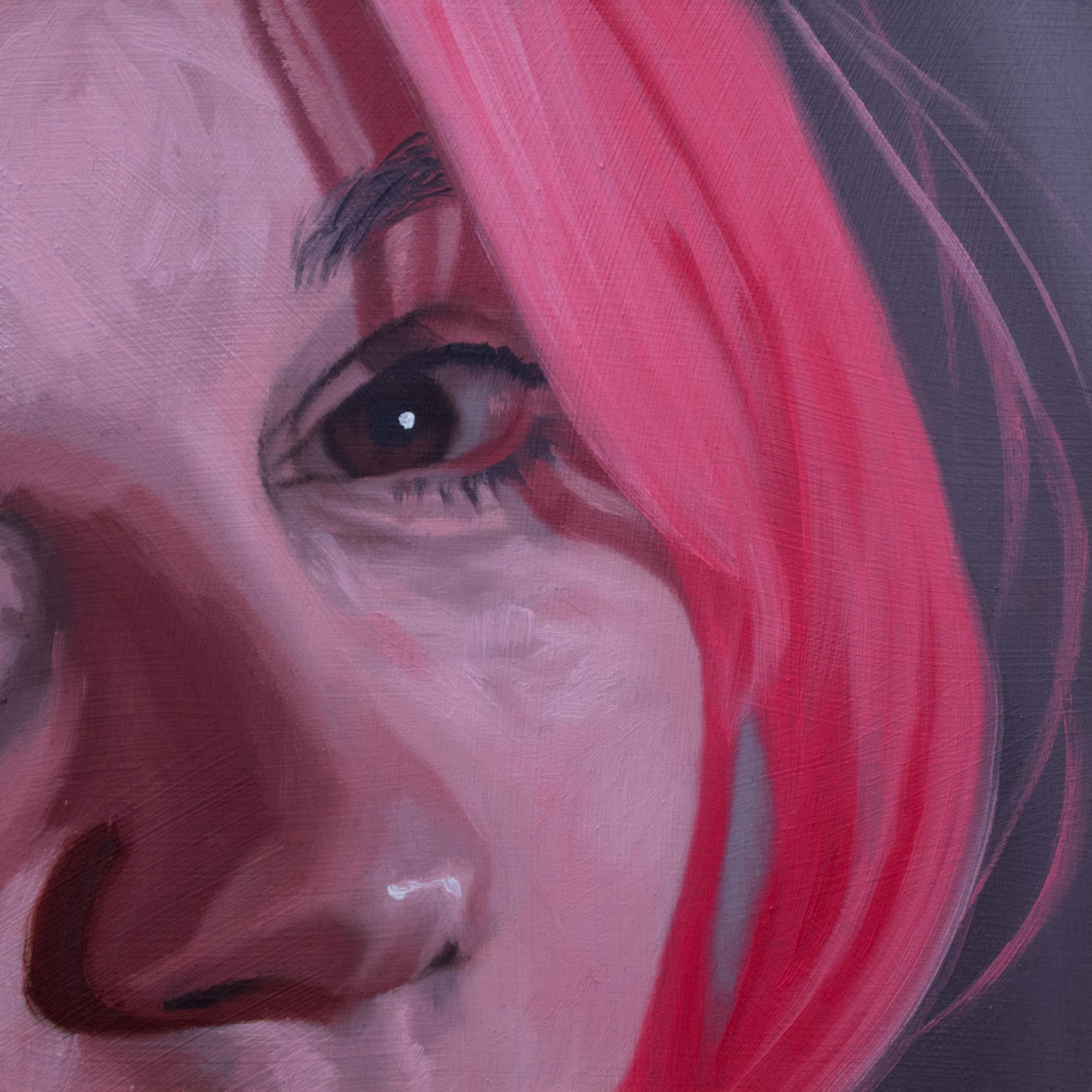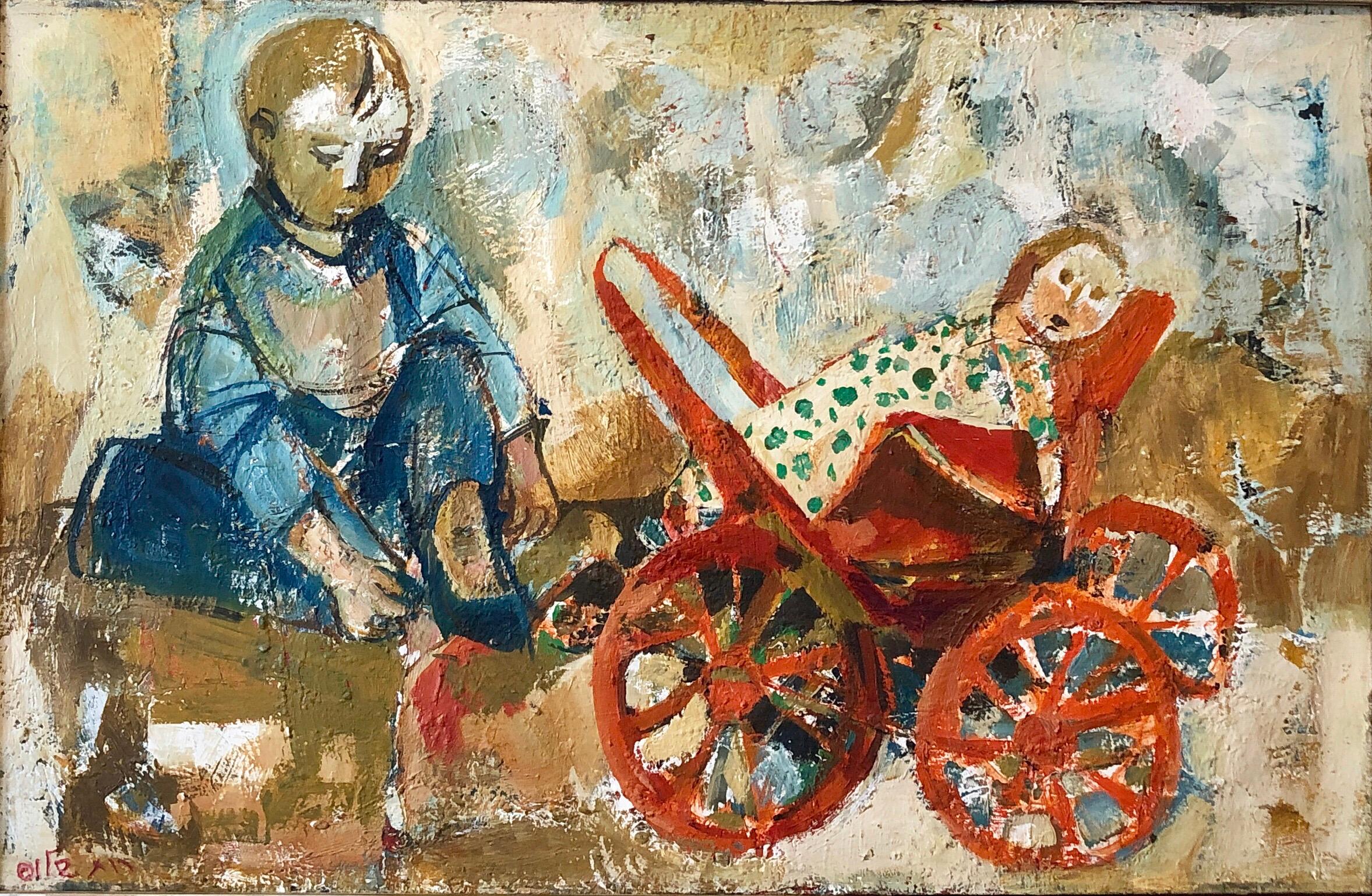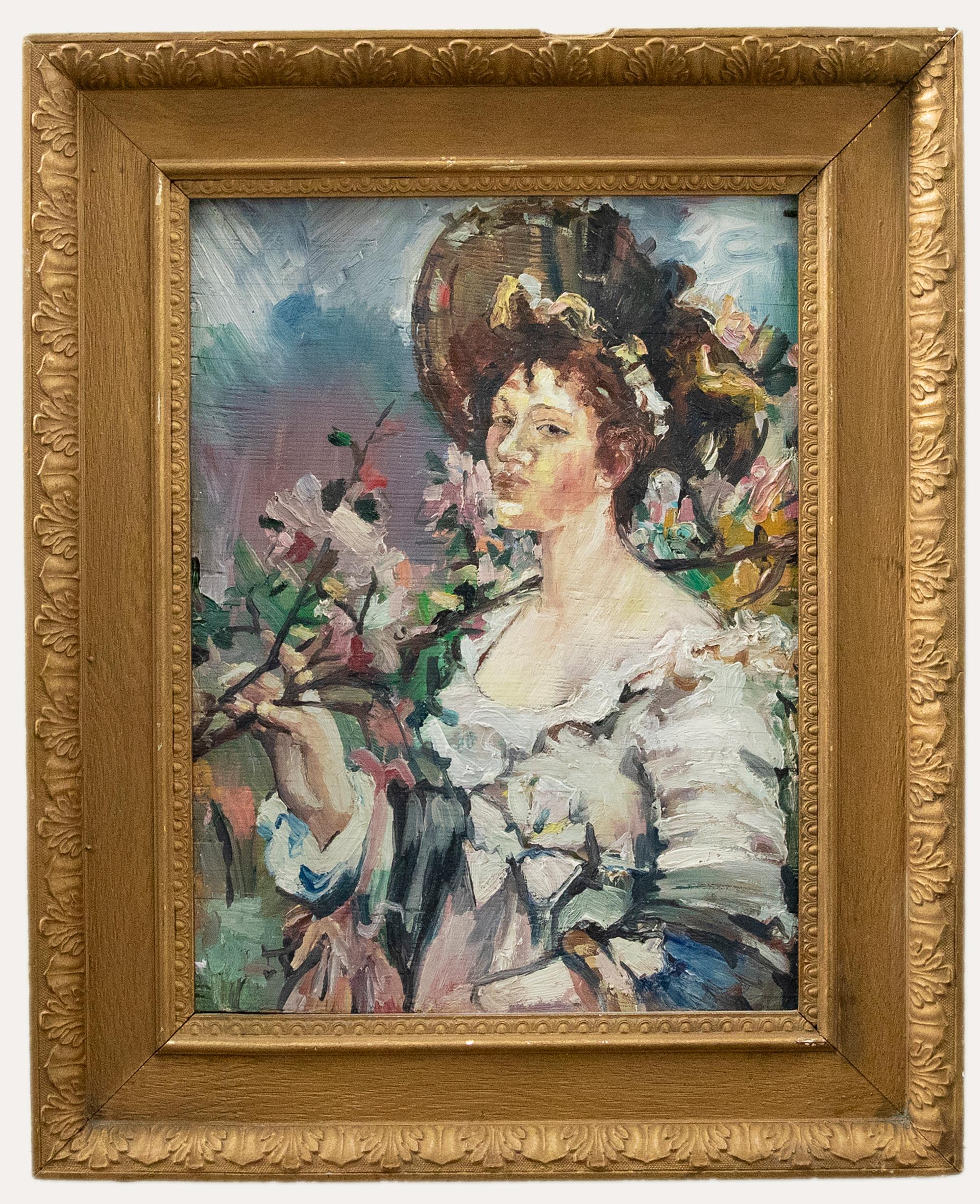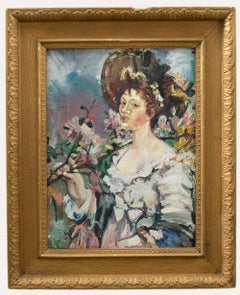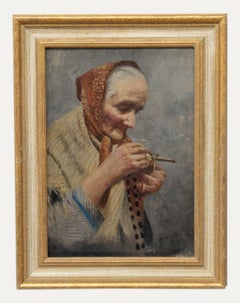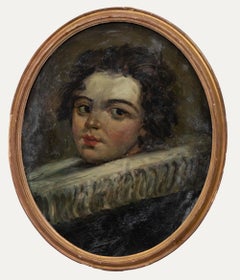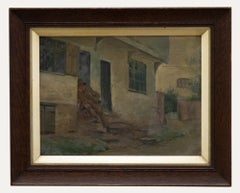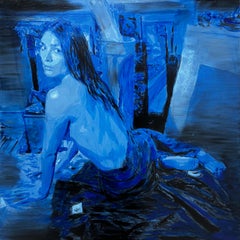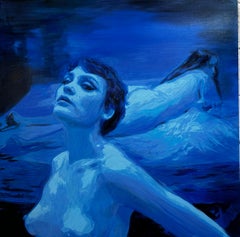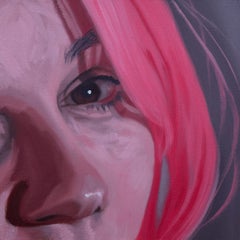Items Similar to George Weissbort (1928-2013) - Mid 20th Century Oil, Dynamic Self Portrait
Want more images or videos?
Request additional images or videos from the seller
1 of 7
George WeissbortGeorge Weissbort (1928-2013) - Mid 20th Century Oil, Dynamic Self Portrait20th Century
20th Century
About the Item
Unsigned. Provenance: Studio Sale, George Weissbort, 2 June 2024. On board.
- Creator:George Weissbort (1928 - 2013, British)
- Creation Year:20th Century
- Dimensions:Height: 24.02 in (61 cm)Width: 16.15 in (41 cm)
- Medium:
- Period:
- Condition:Marks and abrasions to the painting's surface. Wear and some paint loss to the edges of the board.
- Gallery Location:Corsham, GB
- Reference Number:Seller: sm8091stDibs: LU881316098042
George Weissbort
George Weissbort was a Belgian–born British artist. He lived and painted in Wye Valley, England. The critic Brian Sewell, considering him an important exponent of an earlier style at a time not widely receptive to it, described him as having "painted the right pictures at the wrong time"
About the Seller
4.9
Platinum Seller
Premium sellers with a 4.7+ rating and 24-hour response times
Established in 2010
1stDibs seller since 2018
1,227 sales on 1stDibs
Typical response time: 5 hours
- ShippingRetrieving quote...Shipping from: Corsham, United Kingdom
- Return Policy
Authenticity Guarantee
In the unlikely event there’s an issue with an item’s authenticity, contact us within 1 year for a full refund. DetailsMoney-Back Guarantee
If your item is not as described, is damaged in transit, or does not arrive, contact us within 7 days for a full refund. Details24-Hour Cancellation
You have a 24-hour grace period in which to reconsider your purchase, with no questions asked.Vetted Professional Sellers
Our world-class sellers must adhere to strict standards for service and quality, maintaining the integrity of our listings.Price-Match Guarantee
If you find that a seller listed the same item for a lower price elsewhere, we’ll match it.Trusted Global Delivery
Our best-in-class carrier network provides specialized shipping options worldwide, including custom delivery.More From This Seller
View AllFrench School Mid 20th Century Oil - The Smell of Spring
Located in Corsham, GB
A fine impressionist style portrait study of a young woman in a garden filled with flowers. She pulls a branch of blossom towards her to smell, her eyes drifting to the distance in t...
Category
20th Century Portrait Paintings
Materials
Oil
$493 Sale Price
20% Off
Continental School Mid 20th Century Oil - Woman Holding Her Rosary
Located in Corsham, GB
Portrait in oil. Indistinctly signed to the lower right. Presented in a cream and gilt-effect frame. On canvas on stretchers.
Category
20th Century Portrait Paintings
Materials
Oil
$435 Sale Price
20% Off
19th Century Oil - Portrait of a Prince
Located in Corsham, GB
In the style of the Old Masters. Unsigned. Presented in an oval gilt frame. On board.
Category
19th Century Portrait Paintings
Materials
Oil
Frederick Thomas Callcott (1853-1923) - Early 20th Century Oil, Stumbling Home
Located in Corsham, GB
An accomplished scene by well listed artist and sculptor Frederick Thomas Callcott. It depicts a drunken gentleman slumped in his doorway at sunrise. Signed to the lower left. Well p...
Category
20th Century Portrait Paintings
Materials
Oil
John Steward - 1991 Oil, The Breakfast Table
Located in Corsham, GB
Signed and dated to the lower right. On paper.
Category
20th Century Portrait Paintings
Materials
Oil
$343 Sale Price
20% Off
German School Early 20th Century Oil - The Morning News
Located in Corsham, GB
A charming study of an older gentleman reading the newspaper. Signed illegibly to the lower right. Presented in a gilt frame with foliate strapwork. On canvas.
Category
20th Century Portrait Paintings
Materials
Oil
$746 Sale Price
20% Off
You May Also Like
Untitled - Woman, nude portrait, figurative oil painting, blue & black
Located in Ciudad de México, MX
Using pure oil paint, which gives the artwork its unique texture, the artist manages to use two particularly difficult colors to work with: black and blue. In his composition, he cre...
Category
2010s Figurative Paintings
Materials
Oil
Untitled - Woman, nude portrait, figurative oil painting, blue & black
Located in Ciudad de México, MX
Using pure oil paint, which gives the artwork its unique texture, the artist manages to use two particularly difficult colors to work with: black and blue. In his composition, he cre...
Category
2010s Contemporary Figurative Paintings
Materials
Oil
Untitled - Woman, nude portrait, figurative oil painting, blue & black
Located in Ciudad de México, MX
Using pure oil paint, which gives the artwork its unique texture, the artist manages to use two particularly difficult colors to work with: black and blue. In his composition, he cre...
Category
2010s Contemporary Figurative Paintings
Materials
Oil
"Gone Fey" - Portrait Oil Painting
By Shaina Craft
Located in Denver, CO
Shaina Craft's "Gone Fey," created in 2024, is a compelling oil on wood panel artwork, measuring 6 x 6 x 0.75 inches. This piece is a prime example of Craft's proficiency in portrait...
Category
21st Century and Contemporary Figurative Paintings
Materials
Wood, Oil
Israeli Oil Painting Ruth Schloss Child, Doll, Wagon, Kibbutz Social Realist Art
By Ruth Schloss
Located in Surfside, FL
Large magnificent colorful Ruth Schloss oil painting of a child with a wagon with a doll or a baby in a carriage stroller.. Signed in Hebrew
size measures 31x43 with frame , 23x35.25 without the frame. (this is being sold unframed).
Ruth Schloss (22 November 1922 – 2013) was an Israeli painter and illustrator who mainly depicted neglected scenes such as Arabs, transition camps, children and women at eye-level as egalitarian, socialist view via social realism style painting and drawing.
Schloss became Israeli painting’s sensitive, conscious, remembering eye.
Ruth Schloss was born on 22 November 1922, in Nuremberg, Germany, to Ludwig and Dian Schloss, as the second of three daughters of bourgeois assimilationist Jewish family well-integrated into German culture. As the Nazis came into power in 1933, her family immigrated to Israel in 1937, and settled in Kfar Shmaryahu, then an agricultural settlement. Schloss studied at the Department of Schloss graphic design at "Bezalel" from 1938 to 1942 alongside Friedel Stern and Joseph Hirsch. She was a realistic painter who focused on disadvantaged people in the society and social matters as an egalitarian. Her realism was thus an “inevitable realism,” motivated by an inner necessity: the need to observe reality as it is.
Her painting repeatedly addressed the door pulled from its frame, employing drawing’s unique ability to stop time and prolong the image’s persistence in the retina, she repeatedly committed to paper - in a matter-of-fact, non-evasive manner devoid of mystery – man’s tendency to generate chaos, suffering and pain.
Throughout her life, Schloss remained minimalist. Painting about human fate was the main subject of her artworks. Her natural inclination was to describe the darker aspect of human existence.
1930s
The Schloss household was characterized by open, liberal spirit, in keeping with the parents’ progressive views. It deeply influenced Ruth’s mental development, as she learned to tie culture and art with sensitivity towards the weak and underprivileged.
In Jerusalem, she joined a commune of Hashomer Hatzair in which she shaped her socialist views, which she maintained throughout her long career.
1940s
In this period she mainly depicted landscapes of kibbutz and wretched women living hard life, children in huger, older people, refugees. After completing her art studies, Schloss joined a training group at Kibbutz Merhavia in 1942, and after two years moved to Karkur region, the nucleus established Kibutz Lehavot Habashan in the Upper Galilee. Through this time, she fell in love with the surroundings and drew landscapes. They are simple and direct with fresh, lucid lines. These paintings were selected as the main works of her first exhibition in 1949.
In early 1945, Schloss started to draw illustrations in the children’s magazine Mishmar Leyeladim, and designed the logo of Al Hamishmar, the paper’s new name in 1948. In 1948, upon the founding of Mapam (United Workers’ Party), she designed her party’s emblem, which became a well-known icon. She kept working as an illustrator for Mishmar Layeladim until 1949.
"Mor the Monkey" project yielded financial profits and this income was used for a study trip to Paris for two years. She was succesfull as illustrator however, she had inner conflicts of her identity as witnessed painter toward neglected class in Israeli society.
First Exhibition at Mikra-Studio Gallery, 1949
She presented forty drawings on paper in her first solo exhibition, representing a selection of the themes of kibbutz landscape, its lifestyle. Schloss confidently proposed her direction through simplicity without using colors in her drawings.
1950s
Between 1949 and 1951, she studied at the Académie de la Grande Chaumière in Paris.
She began working in oils, with which she continued throughout the 1960s.
The exhibition “Back from Paris” opened in November 1951 at Mikra-Studio Gallery .
In 1951 she married Benjamin Cohen, who served as chairman of the national leadership of Hashomer Hatzair Workers Party in Tel Aviv. He was a theoretician and a man of principle, highly esteemed by its leaders who became a professor of history at Tel Aviv University. In 1953, following the Mordechai Oren affair and the publication of Moshe Sneh 's followers from Kibbutz Artzi, she and her husband left the kibbutz and moved to the agricultural farm, Kfar Shmaryahu, where she lived until her death.
At a certain point in Israeli history, segments of the socialist movement felt that Israel should become part of the Communist bloc, rather than seek the support of the western world. Because the Schloss couple support of Moshe Sneh’s left-wing party, they had to leave the kibbutz.
She loved to depict ordinary women as figurative on her painting without hiding or making up anything. The poet Natan Zach wrote about her works in 1955: “Her motto remains that which has been all these years: life as it is, without bluffing."
Schloss’s “Pietà” (1953) became a universal cry expressing the pain of mothers on either side of the divide. In the late 1950s, she was the mother of two daughters. When she drew her daughters, unlike the universal babies she depicted, naked and with clenched fists, the painting of her children employed babyish sweetness to the full in a quiet, peaceful and heart-stirring filling rather than urgency. She also painted children in the transition camp and Jaffa in the 1950s and 1960s.
1960s-1980s – The period of Studio in Jaffa
Schloss painted at a studio in Jaffa from 1962 till 1983. In this time, she turned her interest to people around her more than kibbutz – the children, mothers, and poor workers, the alleys and houses. She opened the space to the street and its dwellings, built interactions around it, and was nurtured by the presence of the outside in her work.
1960s Schloss familiarized to an Arab woman, Nabava, lived in poor. Schloss returned to painting images of old people later, and she called her painting figurative elderly people in the old age homes “waiting”.
In the late 1960s, Ruth discovered acrylic paint and never turn back to oil painting.
In 1965 Schloss devoted a series “Area 9 (1965)”, dedicated to the demolition of Israeli-Arab houses and the expropriation of the land, and carried a definite socio-political messages. The series was exhibited at Beit Zvi, Ramat Gan, in 1966. She was the only artist who addressed the result of the Six-Day War immediately afterward. In 1968, Schloss and Gansser-Markus presented “Drawing of War” in Zurich gallery. She expressed the war as an ultimate expression of destruction and ruin, regardless of victors and vanquished.
1970s In late 1970s Schloss began printing the selected photograph directly on the canvas, posterior reworking it in acrylic. She decided to print her work at Har-El Printers in Jaffa, and these became the surface of her painting. This technique was mainly adopted in two large series: Anne Frank (1979-1980) and Borders (1982). Through this technique she placed the figure of elder Frank next to that of the famous young Frank, and released it at the exhibition at Bet Ariela Cultural Center, Tel Aviv, in 1981. The series touched upon the Nazi Holocaust.
1980s The Lebanon War raised the question of “The Good Fence” and the effect of the war. She dedicated a large series Boarders, one of the most powerful image linked to the series is the figure of Yemenite woman raising her hand. She was the first to raise the Black Panthers demonstration to the level of a social icon. In the 1980s and again in 2000, the Intifada uprisings also led Schloss to the easel to render a good number of representational and symbolic works that in their way denounced Israel's political and military actions.
1990s – 2000s Ruth Schloss never had an exhibition in a major Israeli museum. Her works were presented in private galleries and small museums. The main museums, the Tel Aviv Museum of Art and the Israel Museum, included her works only in group exhibitions, and only in 1991 was her retrospective exhibited at the Herzliya Museum.
In the 2000s, Schloss’s metaphors turned into animal kingdom and Bedouins in the south. A huge rhinoceros, birds of prey, and other "bad animals," as Cohen Evron, daughter of Ruth, calls them and "I connected this to the Nazis," said Schloss. Schloss' work after she didn't find human expression able to transmit the endless cruelty she saw in Israel's political mentality.
Schloss also continued to follow and collect documentary photographs of destructions of houses from the war, the Intifada, the sequence of her work about ruin from 1949 to 2005, was a cumulative testimony about the painful history of Israel and Palestine.
In 2006, a large retrospective exhibition of her work was presented at the Museum of Art in Ein Harod, curated by Tali Tamir.
Education
1938-41 Bezalel Art Academy, Jerusalem, with Mordecai Ardon
1946 painting course for Kibbutz Artzi artists with Yohanan Simon and Marcel Janco
1949-51 Académie de la Grande Chaumière, Paris
Awards and recognition
1965 Silver Medal, International exhibition in Leipzig, Germany
1977 Artist-in-Residence, The Cité Internationale Universitaire de Paris
Selected solo exhibitions
2004 “Micha...
Category
Mid-20th Century Realist Figurative Paintings
Materials
Canvas, Oil
The Girl with the Green Ribbon - Contemplative Female Figure, Oil on Panel
By Tina Figarelli
Located in Chicago, IL
Tina Figarelli is a classically trained artist whose favorite subject matter in her artwork is ideas with a strong narrative. Tina leaves the viewer hints about the story in the piec...
Category
2010s Contemporary Portrait Paintings
Materials
Oil, Panel
